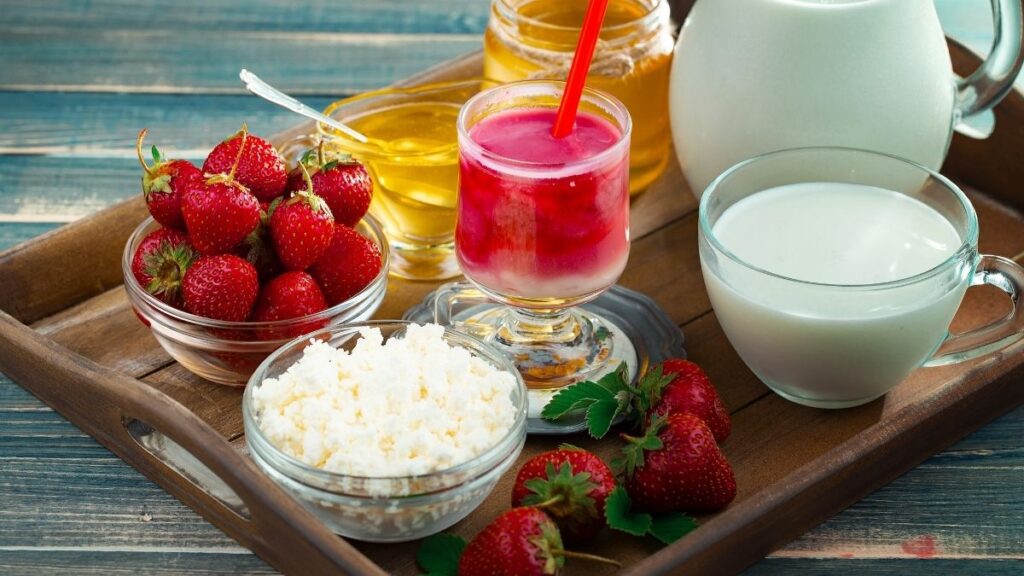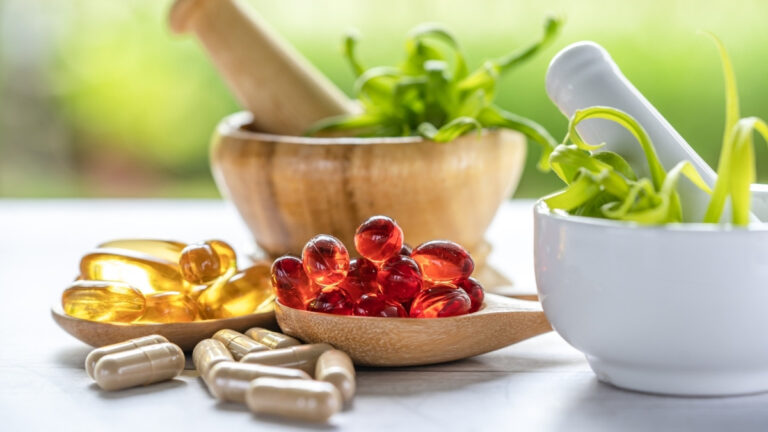Urgent Alert for Over 60s: Why These Popular “Superfoods” Are Actually the Worst Foods for Older Adults
A common scenario unfolds in grocery stores daily: a senior, often following a doctor’s advice, selects foods labeled as “healthy”—perhaps flavored yogurt, veggie chips, or a “low-fat” frozen meal.
The intention is virtuous, aimed at managing cholesterol, blood pressure, or weight.
But what if those very foods, marketed with a “health halo,” are silently contributing to the health problems they are meant to solve? For adults over the age of 65, the modern “healthy” food landscape is a minefield of hidden risks.
This article, backed by 2024 and 2025 medical research, reveals the hidden dangers for seniors in seemingly healthy foods.
This analysis will expose the risks of ultra-processed “health” foods, silent saboteurs like sugar and salt, dangerous medication interactions, and critical food safety rules that become life-or-death for an aging population.
Medication “Danger Zones”
Tap a moving block to reveal the hidden risk!
The “Healthy” Label Lie: How Ultra-Processed Foods (UPFs) Target Seniors
The most significant danger often hides behind the most aggressive “healthy” marketing. Ultra-Processed Foods (UPFs) are not just “junk food.”
As defined by the NOVA classification system, they are industrial formulations made from substances extracted from foods or synthesized in labs, often containing additives to modify color, flavor, and texture.
The “health halo” deception is pervasive. It includes “healthy” breakfast cereals (often high in sugar), “veggie chips” (often high in inflammatory omega-6 fats and sodium), “low-fat” snacks, and “healthy” frozen meals.
For seniors, the consumption of these products is linked to the acceleration of their most-feared conditions: muscle loss, frailty, and cognitive decline.
The Link to Frailty and Muscle Loss (Sarcopenia)

Sarcopenia, the age-related loss of muscle mass and function, is a primary driver of lost independence in seniors. Research now indicates a diet rich in UPFs can increase the risk or accelerate the onset of this condition.
The mechanism for this is dangerously simple. UPFs are not just harmful for what they contain (additives, inflammatory fats), but for what they displace.
A diet high in UPFs leads to “inadequate nutrition and lower intake” of the very nutrients seniors need to fight sarcopenia, including protein, dietary fiber, vitamins A, C, E, zinc, and magnesium.
A senior, in an effort to be healthy, may choose a “low-fat” veggie chip snack. This snack, being low in protein and fiber, displaces a whole-food, protein-rich option. This “healthy” choice thereby becomes a pro-frailty choice.
A 2024 study of 938 older adults (the InCHIANTI study) provided a stark, long-term warning: higher UPF consumption was significantly associated with a greater baseline frailty index. This difference was not temporary; it persisted over a 16.1-year follow-up period.
The 2024/2025 Data on UPFs and Brain Health

The impact on cognitive health is equally alarming. A major 2024 study published in Neurology investigated the link between UPFs and adverse brain health.
The findings were stark: just a 10% increase in relative intake of UPFs was associated with a 16% higher risk of cognitive impairment.
This association remained even after accounting for adherence to “healthy” dietary patterns like the Mediterranean diet. This suggests the industrial processing itself is a unique risk factor.
Multiple studies from 2024 and 2025 confirm this link between ultra-processed foods seniors consume and accelerated cognitive decline or Alzheimer’s disease.
However, the most actionable data reveals a critical nuance: not all UPFs are equally detrimental to the brain. A 2025 study noted that while total UPF consumption was not associated, consumption of “UPF animal products and beverages” was.
Another study found that “ultra-processed meat and oils/spreads” were associated with a faster decline in executive functions.
This changes the advice from a generic “avoid UPFs” to a specific, urgent warning to first cut out processed meats (e.g., “healthy” low-fat turkey slices), sugary “vitamin-enhanced” drinks, and certain processed spreads.
The Mortality Link and the Actionable Solution

The cumulative damage of UPFs was confirmed in a June 2024 study, which found that older adults who consumed the highest amounts of UPFs were approximately 10% more likely to die over a median follow-up of 23 years compared to those who consumed less.
This data is not meant to induce fear, but to empower. The goal is reduction, not necessarily total elimination. As noted by Professor Tim Spector of the ZOE nutrition science company, a leading voice on this topic in 2025, simply halving UPF intake can lead to a reduction in mortality.
The solution is to learn to see past the marketing. As Prof. Spector states, “The real food doesn’t come with a health claim or a label, interestingly”.
The “Silent Saboteurs”: Hidden Sugar and Sodium in Senior Diets
For seniors managing chronic conditions, two “silent saboteurs” are particularly dangerous: added sugar and sodium.
The vulnerability is age-specific; older adults have a higher prevalence of hypertension, diabetes, and age-related “salt-sensitivity,” which means their blood pressure responds more dramatically to salt intake. These substances are frequently hidden in the very foods marketed as healthy.
The Sugar Trap (Flavored Yogurts, Cereals, and Juices)

The American Heart Association’s (AHA) 2025 recommendations are clear: limit added sugars to no more than 6 teaspoons (100 calories) for most women and 9 teaspoons (150 calories) for most men. Added sugars contribute zero nutritional benefit, and our bodies do not need them to function.
The “healthy” culprits are often breakfast-table staples. The AHA identifies “sweetened yogurts,” “breakfast cereals and bars,” and “fruit drinks” as major sources of added sugar. A single serving of flavored yogurt can contain more than half of a senior’s daily recommended limit.
The actionable guide is to read the “Nutrition Facts” panel, looking specifically for the “Added Sugars” line. Hidden names on ingredient lists include syrup, molasses, cane juice, and most words ending in “-ose” (like fructose or dextrose).
Simple, effective swaps include replacing flavored yogurt with plain yogurt and fresh berries, or swapping sugary cereal for whole oatmeal with nuts.
The Sodium Surge (Canned Soups, Frozen Meals, and Processed Meats)

The sodium problem is even more deceptive. More than 70% of the sodium Americans eat comes not from the salt shaker, but from packaged, prepared, and restaurant foods.
While the general limit is 2,300 mg per day, the AHA’s ideal limit is no more than 1,500 mg daily for most older adults, especially those with high blood pressure.
“Sodium is hidden everywhere,” stated Dr. Morton in an American Medical Association (AMA) release, “especially in American diets because everything we eat is processed”. This includes “healthy” canned soups, processed lean meats, and “low-fat” frozen dinners.
This exposes a critical “low-fat” trap. For decades, seniors were told to fear fat. Food manufacturers responded by creating “low-fat” and “healthy” processed foods. But when fat is removed, flavor is lost. It is replaced with sodium and sugar to make the food palatable.
A senior, trying to protect their heart, might buy a “low-fat” frozen meal. This meal, to be edible, is loaded with hidden sodium, which directly pulls water into the bloodstream and increases blood pressure.
This action directly exacerbates the very hypertension the senior was trying to manage. The “healthy” marketing of “low-fat” creates a direct-line trap into the “high-sodium” risk, making the “healthy” choice ironically worse.
The solution, as advised by AMA doctors, is to focus on fresh, unprocessed foods. “The biggest thing you can do is focus on fresh food,” advises Dr. Morton. “So, fresh fruits and vegetables, lean meats, no processed foods and whole grains”. For flavor, “use herbs, spices and citrus vinegar, for example”.
The Polypharmacy Problem: When “Healthy” Foods and Medications Collide
CRITICAL ALERT: FOOD & DRUG COLLISION GUIDE!
Interactions Seniors Must Know
A danger unique to the senior population is the intersection of diet and polypharmacy (the regular use of multiple medications).
The statistics are staggering: “about a third of American adults in their 60s and 70s use five or more prescription drugs regularly,” according to a CDC report cited by Johns Hopkins.
This prevalence rises to 41.1% for those aged 75–84 and reaches 49.4% for individuals aged 85 and older.
This reality creates a high-stakes environment for food-drug interactions in elderly patients. The problem is not just prescription drugs; it is compounded by a “healthy supplement” blind spot.
Seniors, in an effort to be healthy, often take over-the-counter supplements. However, the FDA does not approve these for safety or efficacy before they are marketed.
This combination of high prescription drug use and high unregulated supplement use creates a perfect storm for adverse events.
Specific Food & Supplement Interactions to Watch in 2025

The interactions are not always intuitive. Sometimes, the “healthiest” foods and supplements are the most dangerous in combination with specific medications.
Grapefruit: This seemingly healthy fruit contains compounds that can interfere with the metabolism of many drugs, intensifying their effects to dangerous levels. This is a known risk for certain medications for high blood pressure, anxiety, and insomnia [User Content].
Vitamin K (in Leafy Greens): Leafy greens like spinach and kale are the ultimate “health food.” But as the National Institutes of Health (NIH) warns, Vitamin K “can reduce the ability of the blood thinner warfarin to prevent blood from clotting”.
A senior eating a large kale salad to “be healthy” could be unknowingly negating their life-saving medication.
St. John’s Wort: This popular “natural” supplement for mood “can speed the breakdown of many medicines and reduce their effectiveness,” including some heart medications.
Calcium Supplements: Marketed heavily to seniors for bone health, some research indicates they “can impact heart… health” and may be inappropriate for some individuals.
Antioxidant Supplements (Vitamins C & E): While beneficial from food, high-dose supplements “might reduce the effectiveness of some types of cancer chemotherapy”.
The following table outlines some of the most critical interactions.
The “Fresh” Danger: Why Food Safety Is Not a Drill for Seniors
The final hidden risk involves “fresh” foods. For most adults, a foodborne illness is a “stomach bug,” an unpleasant 24-hour event. For seniors, it is a medical emergency.
As people age, their immune systems and organs weaken, making them less able to recognize and fight off harmful germs. The data from the CDC is chilling: “nearly half of people aged 65 and older who have a lab-confirmed foodborne illness… are hospitalized”.
This is a catastrophic risk, as foodborne pathogens can lead to sepsis and septic shock in older adults.
The irony is that the highest-risk foods are often those health-conscious people seek out. Doctors and the CDC warn seniors to avoid “raw or unpasteurized milk, dairy products, and juice (including soft cheeses)”.
A senior might purchase “raw milk” or “artisan unpasteurized brie” from a farmer’s market, believing it is “natural” and thus healthier than processed cheese. For their compromised immune system, this “healthy” choice is a high-stakes gamble for Listeria, a pathogen with a high fatality rate, especially in older adults.
High-Risk “Healthy” Foods to Handle with Care

The rules for food safety for seniors are not suggestions; they are critical. High-risk “healthy” foods to avoid or handle with extreme caution include:
Raw or Undercooked: Eggs (runny yolks), meat (rare steak), poultry, and seafood (especially raw oysters and sushi).
Unpasteurized: “Farm-fresh” milk, soft cheeses (Brie, Feta, Camembert), and fresh-squeezed ciders or juices.
Raw Sprouts: Alfalfa, mung bean, and other sprouts, which are often hidden in “healthy” salads and sandwiches, are a frequent source of E. coli and Salmonella outbreaks.
The Reheating Myth: Rice, Potatoes, and Spinach

A significant risk lies not just in raw foods, but in improperly handled leftovers. There is a common misconception about the dangers of reheating certain foods.
Rice & Potatoes: The danger is not the act of reheating; it is the act of improper cooling. Both rice and potatoes can contain spores of a bacterium called Bacillus cereus.
These spores can survive the initial cooking. If the food is then left at room temperature (the “danger zone” between 40°F and 140°F), the spores germinate, and the bacteria multiply, producing heat-stable toxins.
The Critical Fact: Reheating the rice or potatoes to a high temperature will kill the bacteria, but “you’re not destroying the toxins”. These toxins are what cause severe vomiting and food poisoning.
Spinach: Cooked spinach is rich in nitrates. If it is cooled too slowly or reheated multiple times, bacteria can convert these nitrates into nitrites, which can be harmful.
The actionable guide is a set of non-negotiable rules:
The 2-Hour Rule: All leftovers must be cooled rapidly (e.g., in shallow containers) and placed in a refrigerator (below 40°F) within 2 hours of cooking.
The 165°F Rule: Reheat all leftovers to an internal temperature of 165°F, ensuring they are steaming hot throughout.
The 1-Reheat Rule: Reheat food only once. Do not reheat the same portion multiple times.
THE ULTRA-PROCESSED FOOD TRAP!
What “Healthy” Labels Hide
THE DANGER ZONE: Health Risks for Seniors
🧠 Cognitive Decline Risk
A 10% increase in daily UPF intake is associated with a 16% higher risk of cognitive impairment.
💪 Physical Decline & Frailty
UPFs displace essential nutrients (protein, fiber, vitamins) needed to fight sarcopenia (muscle loss).
“THE HEALTHY DECEIVERS”
Vegetable Chips
Often high in sodium, unhealthy oils (omega-6).
Flavored Yogurt
Can contain surprisingly high amounts of added sugar.
“Low-Fat” Frozen Meals
May compensate for fat with added sugar, sodium, and fillers.
Conclusion
Being healthy in senior years is not about fear; it is about facts. As medical professionals warn, many foods marketed as “healthy” can carry hidden risks specifically for adults over 65.
These dangers range from the metabolic—in ultra-processed veggie chips and sugary yogurts that accelerate frailty —to the chemical, in “healthy” supplements and foods that wage war with life-saving medications.
They can even be microbial, in “fresh” unpasteurized foods and improperly cooled leftovers that pose a critical hospitalization risk.
The key for seniors and their caregivers is to look past the label. The most powerful tool is knowledge. An immediate, actionable step is to read the “Added Sugars” and “Sodium” labels on favorite packaged foods.
An even more critical step is to schedule a “medication reconciliation” with a doctor or a registered dietitian (especially one certified in geriatrics) to conduct a full review of all drugs and supplements. This is the first step to ensuring that healthy’ foods aren’t ruining senior lives, but are, in fact, enriching them.








